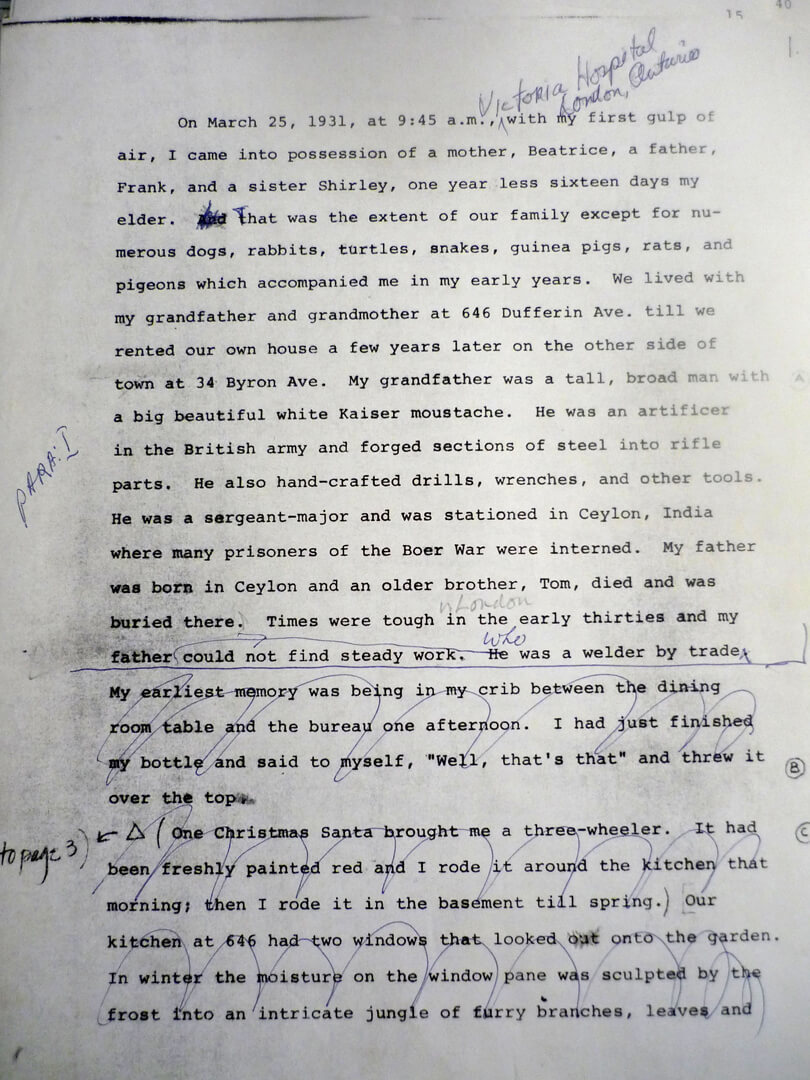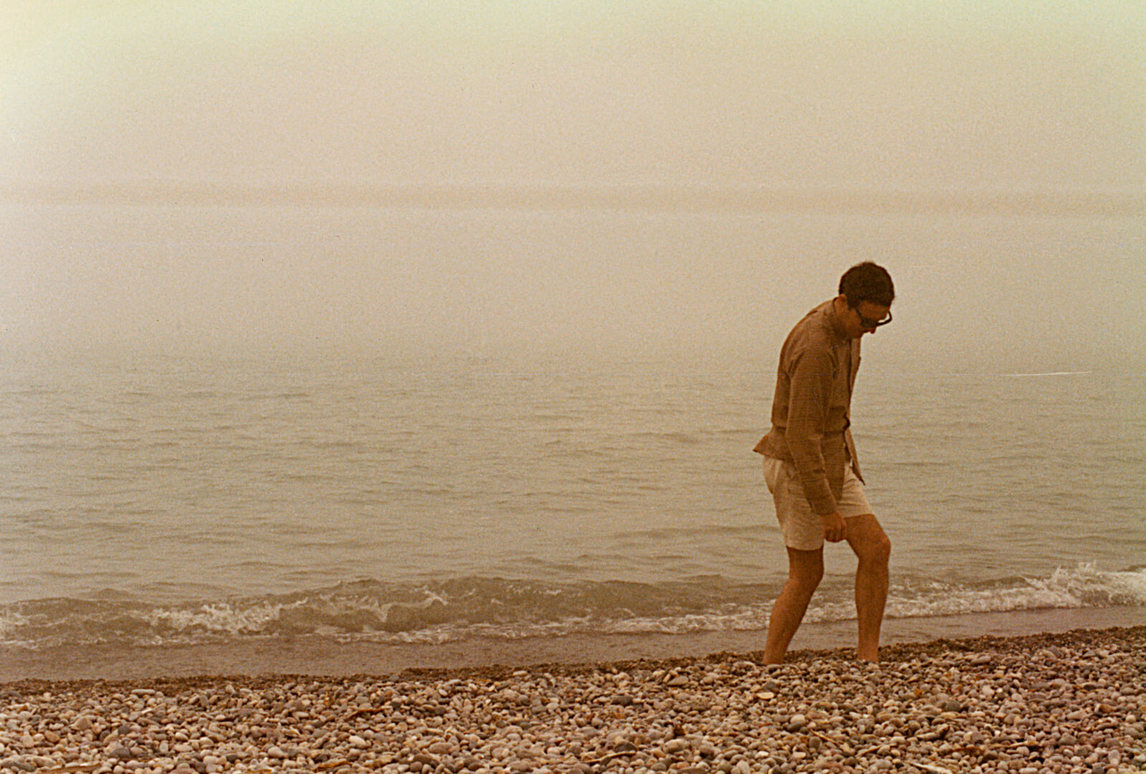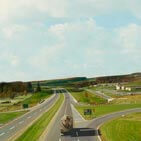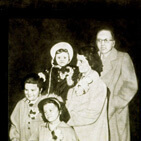Chambers’s wide-ranging interests and early success leave us with an especially rich array of sources and resources about his work. From his own pivotal writings to an extensive archive, documentary films, and two full-scale exhibitions in 2011, Chambers’s legacy is well served.
Key Exhibitions
Chambers’s work gained far more recognition during his lifetime than was the norm for Canadian artists. Many of the crucial insights into his art are to be found in accompanying exhibition catalogues (noted below).

1961
(Month not known), John Chambers, Galería Lorca, Madrid.
October–November 1961, Opening Group Exhibition, Forum Gallery, New York. Subsequent exhibitions at this gallery in 1964 and 1965.
1962
November 1962, Inaugural exhibition, Region Gallery, London, Ontario.
1963
October–November 1963, Chambers, Isaacs Gallery, Toronto (first solo exhibition in Canada).
1968
September 1968, The Heart of London, London Public Library and Art Museum, subsequent national tour, 1968–69. Organized by National Gallery of Canada, Ottawa. Catalogue.
November–December 1968, Canadian Artists ’68, Art Gallery of Ontario, Toronto (Chambers wins first prize for film, R 34, 1967; and for painting, Regatta No. 1, 1968).
1970
Fall 1970, Jack Chambers: A Retrospective, Vancouver Art Gallery; Art Gallery of Ontario, Toronto. Catalogue.
1980–81
November 1980–January 1981, Jack Chambers: The Last Decade, London Regional Art Gallery. Catalogue.
1988
September–October 1988, Jack Chambers Retrospective, London Regional Art Gallery, subsequent national tour, 1988–89. Catalogue.
October 1988, Jack Chambers Film Retrospective, London Regional Art Gallery.
1992
May–June 1992, Jack Chambers: Indian Drawings, Gairloch Gallery, Oakville Galleries, Ontario.
2001
March 2001, The Jack Chambers Film Project, London Regional Art and Historical Museums.
2011
January–April 2011, Jack Chambers: The light from the darkness, silver paintings and film work, Museum London. Travelled to McMichael Canadian Art Collection, Kleinburg, Ontario, October 2011–January 2012. Catalogue.
November 2011–May 2012, Jack Chambers: Light, Spirit, Time, Place, and Life, Art Gallery of Ontario, Toronto. Catalogue.
Selected Writings by Chambers
Chambers was a profound art theorist. His often difficult writings repay close attention.
“Perceptual Realism.” artscanada 26, nos. 136–37 (October 1969): 7–13.
This difficult essay by Chambers remains his essential statement about his goals and his approach to art, which he calls perceptual realism. He covers most of the topics central to his art: the difference between the classical culture of Europe and the technological society of North America; the importance of photography and film; the nature of perception itself; and his views on avant-garde art, including that of Marcel Duchamp.


“Perceptualism, Painting, and Cinema.” Art and Artists 7, no. 9 (December 1972): 29–33.
Chambers was constantly revising his theoretical understanding of perception and its role in artmaking. By 1972 he had simplified the term “perceptual realism” to “perceptualism,” but the theory remains the same as in 1969. This essay includes a fuller discussion of Chambers’s films, including C.C.C.I., 1970, which he never released publicly.
Red and Green: A Journal
Red and Green is a lengthy and elaborate collection of ideas, articles, and sources that Chambers put together in his quest to understand perception, art, and the human spirit. It is often difficult to tell who wrote which sections; most are quotations from Chambers’s research. Excerpts from the journal were published in artscanada, October/November 1978, 25–29.
Jack Chambers. London, ON: Nancy Poole, 1978.
This limited edition autobiography was planned by Nancy Poole, Chambers’s friend and, latterly, art dealer. It was published soon after his death in 1978. It is the most complete source for the artist’s account of his life, goals, and working methods.
Film, Audio, Video
Chambers’s art has been particularly well served by two documentary films.
Walker, John, and Christopher Lowry. Chambers: Tracks & Gestures. Toronto: Atlantis Films, 1982. 16mm film, 56:50 min.
This film by John Walker and Christopher Lowry is an award-winning full-length account of Chambers’s life and the dominant tenets of his art practice.
Doty, Chris. The Jack Chambers Film Project. London, ON: Doty Docs / Museum London, 2004. Videorecording, 48 min.
Using material from the 2001 symposium of the same title, this DVD brings together clips of Chambers’s films and an important panel discussion about the work.
Critical Interpretations
Chambers’s art has enjoyed extensive and wide-ranging critical attention in exhibitions and films, as well as popular and scholarly articles.
Overview
Reid, Dennis, ed. Jack Chambers: Light, Spirit, Time, Place, and Life. Fredericton: Goose Lane Editions; Toronto: Art Gallery of Ontario, 2011.
Reid’s lead essay supplies the fullest biography of Chambers. This work gives a broad and fully illustrated account of Chambers’s life and work.

Ross Woodman
The single most significant commentator on Chambers is Ross Woodman, professor emeritus of English literature at Western University and a close friend and mentor of the artist.
Chambers: John Chambers Interviewed by Ross G. Woodman. Edited by Dennis Reid. Toronto: Coach House Press, 1967.
This early interview remains one of the most important texts on Chambers. Conducted in 1966, the conversation reveals much about Chambers’s interests in photography, film, and perception.
“The Realism of John Chambers.” Arts International 14, no. 9 (November 1970): 37–41.
This extensive article sets Chambers’s work in an international context.
“Place.” In Jack Chambers: Light, Spirit, Time, Place and Life, edited by Dennis Reid, 107–27. Fredericton: Goose Lane Editions; Toronto: Art Gallery of Ontario, 2011.
This piece provides a full account of Chambers’s dedication to his southwestern Ontario heritage.
Interviews
Rosenberg, Avis Lang. “A Correspondence with Jack Chambers.” Vanguard 11, no. 4 (May 1982): 15–20.
In addition to the interview by Woodman above, this is one of the most useful published sources. The correspondence took place in 1972.
Film Criticism
Chambers began making what he called “personal” films in 1964. While many consider them to be the most important aspect of his varied work, the films have to some extent been considered apart from the rest of his art. The recent upsurge in critical attention to Chambers may finally change this bias and make it more likely that his films, paintings, and drawings will be considered together.
The importance of Chambers’s films has been re-established since his death, most notably by the following: Ross Woodman’s essay “Jack Chambers as Film-Maker,” for the London Regional Art Gallery’s 1980 exhibition and catalogue Jack Chambers: The Last Decade; the special issue of the Capilano Review (no. 33, 1984) devoted to Chambers’s film work, edited by Tom Graff; Bruce Elder’s attention to Chambers in his book Image and Identity: Reflections on Canadian Film and Culture (1989); the 2001 documentary The Jack Chambers Film Project by Chris Doty; and The Films of Jack Chambers (2002), edited by Kathryn Elder. In Jack Chambers: The light from the darkness, silver paintings and film work (exhibition and catalogue, Museum London, 2011), curators Mark A. Cheetham and Ihor Holubizky argue that the films and silver paintings of the mid-1960s can productively be seen as one nuanced body of work.
Further Reading
In addition to the sources already noted, readers might find the following titles useful:
Elder, Bruce. Image and Identity: Reflections on Canadian Film and Culture. Waterloo, ON: Wilfrid Laurier University Press, 1989.
Elder, Kathryn, ed. The Films of Jack Chambers. Toronto: Cinematheque Ontario, 2002.
McInnes, Val Ambrose. To Rise with the Light: The Spiritual Odyssey of Jack Chambers. Toronto: Ontario College of Art, 1989.
Meisel, Louis K. Photorealism. New York: Harry N. Abrams, 1980.

 About the Author
About the Author
 More Online Art Books
More Online Art Books
 Acknowledgements
Acknowledgements